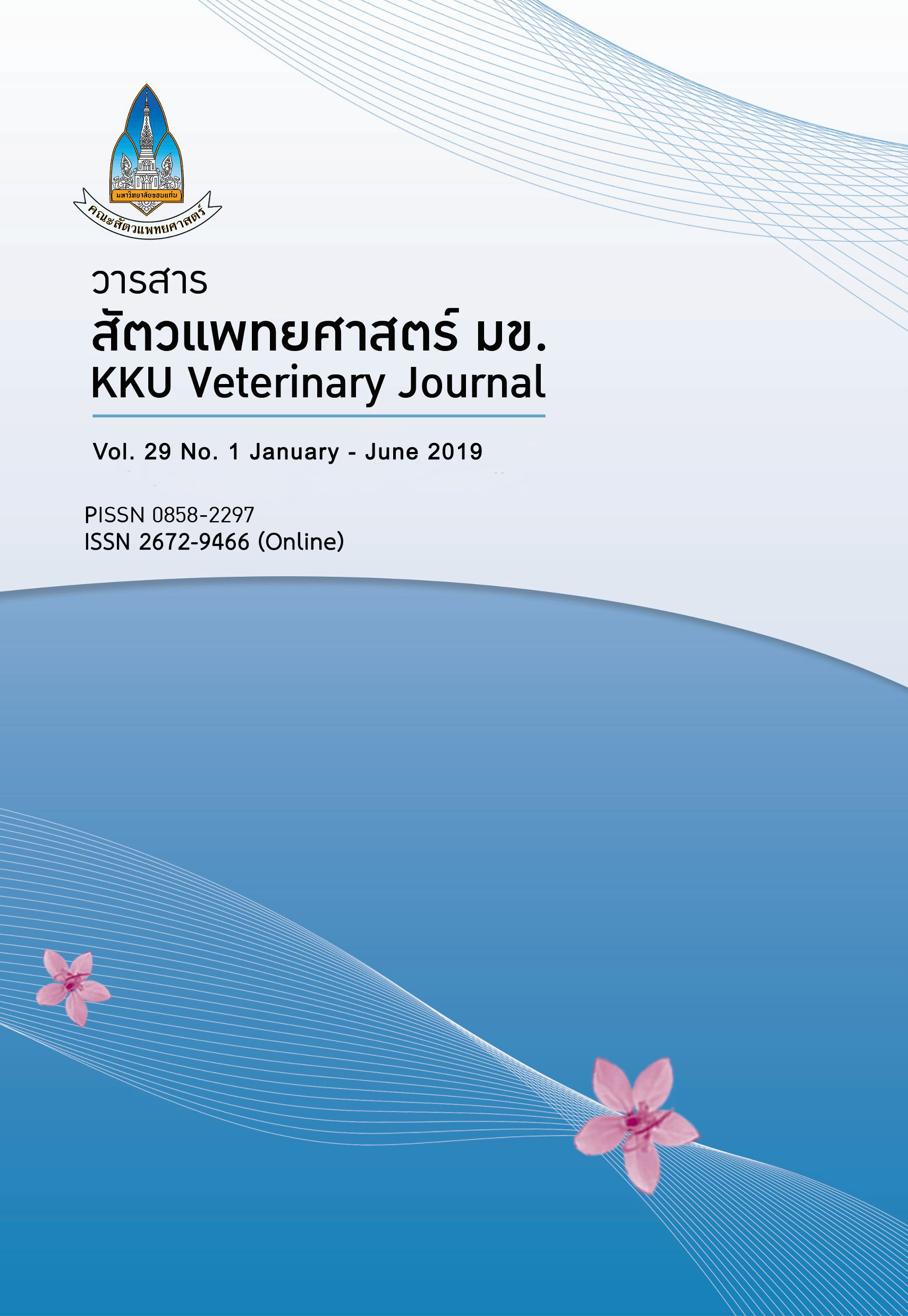The study on situation of beef cattle and satisfaction of farmers in Kalasin Province
Main Article Content
Abstract
Objective: To study the raising conditions of beef cattle in Kalasin province and the satisfaction of beef cattle farmers regarding beef cattle farming methods in Kalasin province
Materials and methods: The samples of population were 18 farmers who raised beef cattle in Kalasin province. The data were analyzed by descriptive statistic and calculated satisfaction rating scale for interpretation.
Results: The results found that most of farmers who raised beef cattle were males and aged between 51 to 60 years old. The farmers were educated up to primary school level and they had no social status. They are 4 to 6 members in a family. They owned land lower than 4.34 acre. Their yearly income is between 10,001 to 20,000 baht per farm. The objective of farmers who raised beef cattle was to sell calves. The labor for raising beef cattle were 1 to 2 persons. The farmers who raised beef cattle had not been trained. It was found that the farmers raise between 1-5 cattle/family and used beef sires in the breed with using genetic selection program to improve breed characteristic. The farmers selected their animals, restrained their cattle separately from their houses and had no area for forage production. They kept rice straw as major feed stuff for their beef cattle. They didn’t feed concentrate for beef cattle but they fed mineral for them. Their beef cattle were vaccinated by the authorities of department of livestock but they were not dewormed. Beef cattle treatment, the beef cattle were treated by authorities of volunteer livestock in the area. There was no loss of beef cattle in last one year. The satisfaction of farmers regarding beef cattle raising showed that the farmers were satisfied at a good level in selling and income from beef cattle, in farmers’ grouping and services of authorities of department of livestock. The problems observed in beef cattle raising found that the farmers lacked an area, roughage, labour and finance for raised beef cattle.
Conclusion: Most farmers have the objective of raising beef cattle to produce beef cattle-breeder and calves for trade and raising beef cattle by himself. Most of the stables are separated from the house, without the area of forage crops. The farmer does not use concentrate as a feed stuff for cattle. But the most popular mineral supplement in cattle. Farmers are satisfied in an overview of every aspect in many levels.
Article Details
References
Kochakorn Dechakhumphutipaporn, Homdee, Somsanhachai Rer-kutha, Prasert. 2009. Project for feasibility study of organ-ic beef market According to the traditional way of raising cattle Complete report the Thailand research fund.
Prantana Prusasri. 2005. Knowledge about cattle series 3 varieties And selection of cows. Neon Book Media. Nonthaburi.
Wisit Ketpanyapong. 2007. The use of herbs to reduce the harmful residues in meat. Journal of Yala Rajabhat University. 2 (1): 82-94.
Suthat Chuengsawan, Pong Lamjek, Sasithorn Nakthong, Chaow-alit Nakthong and Wannee Chivapreecha. 2008. Native beef production system project in the western region of Thailand. Complete report Research Support Fund Of-fice.
Tumwasorn, S., C. Najasingha, C. Kaeowphrommarn and A. wanitchart. 1981. Mineral supplementation for one-fourth American Brahman Crossbred calves in the villages. In:Proc. 2ndSeminar on mineral nutrition in Thailand, April, 28. KU, Bangkok.
Waritthitham, A., C. Lambertz, H.J. Langholz, M. Wicke, and M. Gauly. 2010. Assessment of beef production from Brah-man xThai native and Charolais xThai native crossbred bulls slaughtered at different weights. II: Meat quality. Meat Science. 85(1): 196-200.
Yamane, T. (1973). Statistics: An Introductory Analysis. (3rd ed.). New York: Harper and Row Publication.


